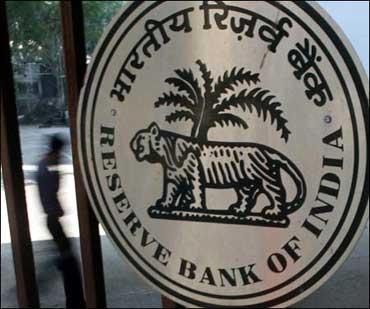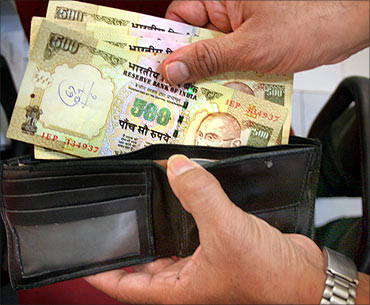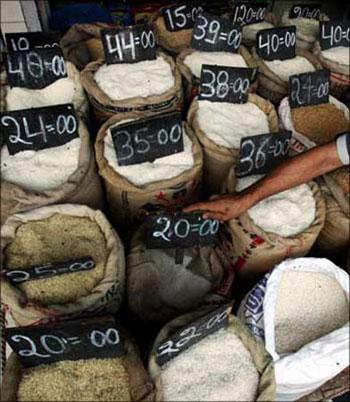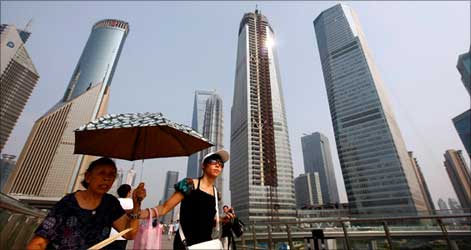
The Reserve Bank of Indian on Thursday raised short-term borrowing rate (reverse repo) by 0.50 percentage points and lending rate (repo) by 0.25 percentage points in its mid-quarter review of the monetary policy.
Housing, auto, personal and corporate loans are now likely to become more expensive with the Reserve Bank raising short-term key policy rates to check spiralling inflation.
The repo rate under the Liquidity Adjustment Facility (LAF) has been hiked by 25 basis points from 5.75 per cent to 6.0 per cent with immediate effect. The reverse repo rate under the LAF by 50 basis points from 4.5 per cent to 5.0 per cent.
Repo rate is the rate at which banks borrow funds from the Reserve Bank of India. Any increase in repo rate makes borrowing from RBI more expensive. This in turn leads to an increase in interest rates at which banks lend money to customers.
The RBI expects this move to contain inflation and anchor inflationary expectations without disrupting growth. It will reduce the volatility in overnight call money rates, thereby strengthening the monetary transmission mechanism, the RBI said.
Click NEXT to read more on RBI's outlook on inflation, liquidity, domestic and global scenario . . .

Inflation
Controlling inflation remains the RBI's dominant concern. The published wholesale price index (WPI) inflation rate for August 2010 was based on the new series (base year: 2004-05=100) for the first time.
The new series has better coverage of items and the manufacturing products group has a slightly higher weight.
In July 2010, there was a slight moderation in the provisional WPI inflation under both the series. There has been further moderation in the provisional WPI inflation to 8.5 per cent in August from 9.8 per cent in July 2010 as per the new series.
The direction of the inflation rate movement, the bank said, is consistent with its projection made in the July review.
The headline inflation remains significantly above the trend of 5.0 5.5 per cent in the 2000s, the RBI said.
Click NEXT to read on . . .
Transmission from policy rates to market rates has strengthened, with 40 banks raising their deposit rates and 26 raising their lending rates. These circumstances are expected to prevail.
Click NEXT to read on . . .
Domestic outlook
Growth in Q1 of 2010-11 was estimated at 8.8 per cent. Although some of this is attributable to a favourable base effect, the growth rate indicates that the recovery is consolidating and the economy is rapidly converging to its trend rate of growth.
The index of industrial production (IIP) showed some slippage in the last month of the quarter (June 2010) with the revised numbers showing growth to be a relatively sluggish 5.8 per cent.
The trend was sharply reversed in July, with growth surging to 13.8 per cent, led by capital goods, which grew by 63 per cent.
Although the year-on-year growth rate for the first four months of the year remains robust at 11.4 per cent, the high volatility over the past two months raises some doubts about how effectively the index reflects the underlying momentum in the industrial sector.
Click NEXT to read on . . .
Growth prospects in agriculture have clearly been boosted by the monsoon, which, by virtue of substantial replenishment of reservoirs and ground water, will also contribute to a good rabi harvest.Virtually all leading indicators of service sector activity point to sustained growth.
Exports
The continuing sluggishness of the global economy constrains export growth while the strong domestic recovery has increased demand for imports. As a result, the trade deficit, and with it the current account deficit, are widening.
Click NEXT to read on . . .
Global scenario
Indicators of economic activity in developed economies continue to suggest that the recovery is slowing and that the second half of 2010 will post slower growth than the first, although expectations have generally not been revised downwards since end-July.
Belying earlier apprehensions, Europe has demonstrated remarkable resilience in the face of the sovereign debt pressures that severely threatened the recovery a few months ago.
China, after showing some signs of slowdown in the second quarter of 2010, appears to have bounced back, with industrial production and trade numbers reviving sharply.
Overall, even as the global environment continues to be a cause for caution, the big picture has not worsened significantly since July.
Click NEXT to read on . . .